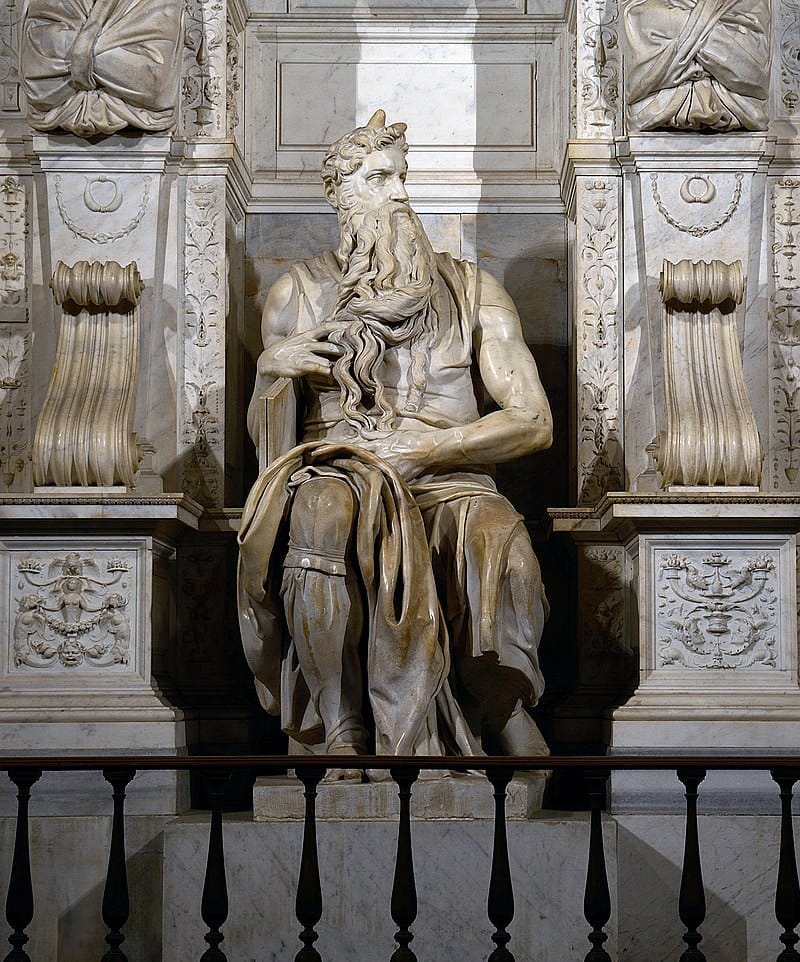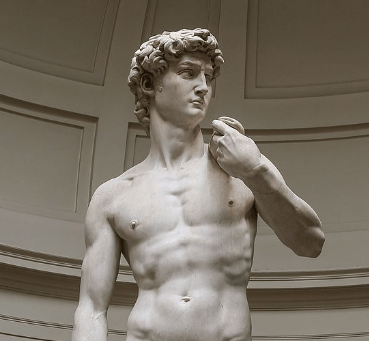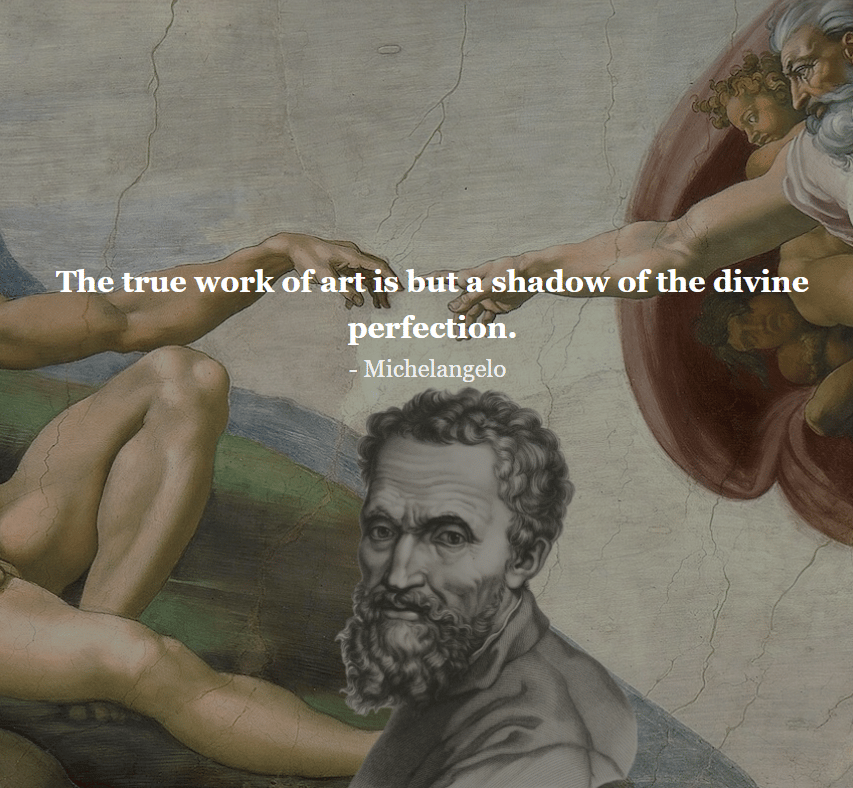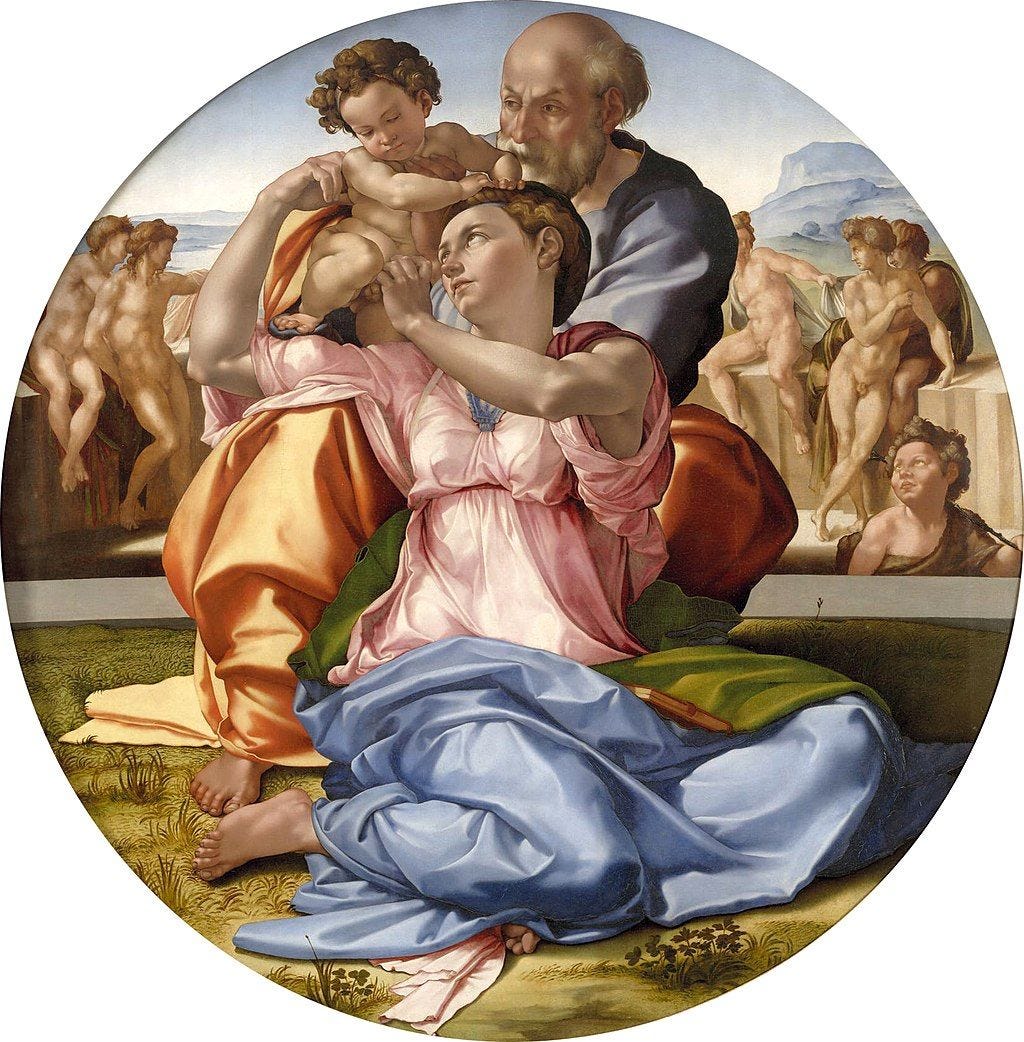Michelangelo’s Mastery of Detail: The Genius, The Decline, and The Tragedy
Michelangelo spent his life breathing divinity into stone, but in the end, the same hands that carved perfection were the ones that shattered it, leaving behind a legacy of both unmatched genius and unbearable torment.
Table of Contents
Newsletter Topic: Michelangelo’s Mastery of Detail: The Genius, The Decline, and The Tragedy
Featured Travel (Premium): Seven Pilgrimage Churches of Rome
Welcome to the Thursday edition of The Culture Explorer, where we explore the genius of Michelangelo and his impact on art. In today’s premium edition, we take a deeper dive into art, culture, and travel in Rome, uncovering the city’s timeless masterpieces and hidden treasures.
Michelangelo’s sculptures don’t just capture the human form—they breathe life into stone. His understanding of anatomy, tension, and movement is unmatched, turning cold marble into figures that feel alive, thinking, and suffering.
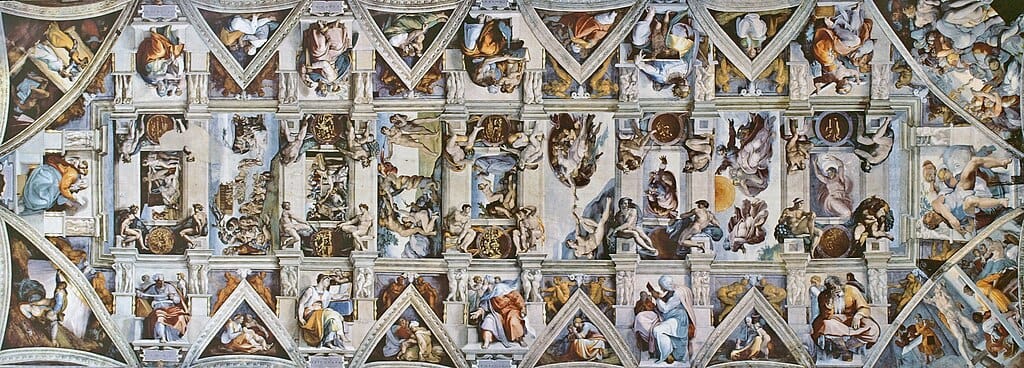
Yet, as his life progressed, the precision and perfection that once defined his work began to slip into something else—chaos, frustration, and eventually, destruction. To truly understand Michelangelo, we must examine both his heights of perfection and the tragic unraveling of his later years.
When most people think of Michelangelo, they picture David or the Sistine Chapel ceiling. But Moses, a lesser-known masterpiece, showcases his obsessive attention to detail in ways few have noticed. One particularly shocking feature is the tiny, flexed muscle in his right forearm, the extensor digiti minimi, subtly tensed in response to his slightly raised pinky. This is not just a sculptor showing off his anatomical knowledge—it’s biology frozen in stone. The veins in his arms bulge as if blood still courses through them. His beard cascades in tight, twisting curls, each strand carved with the precision of a painter’s brushstroke.
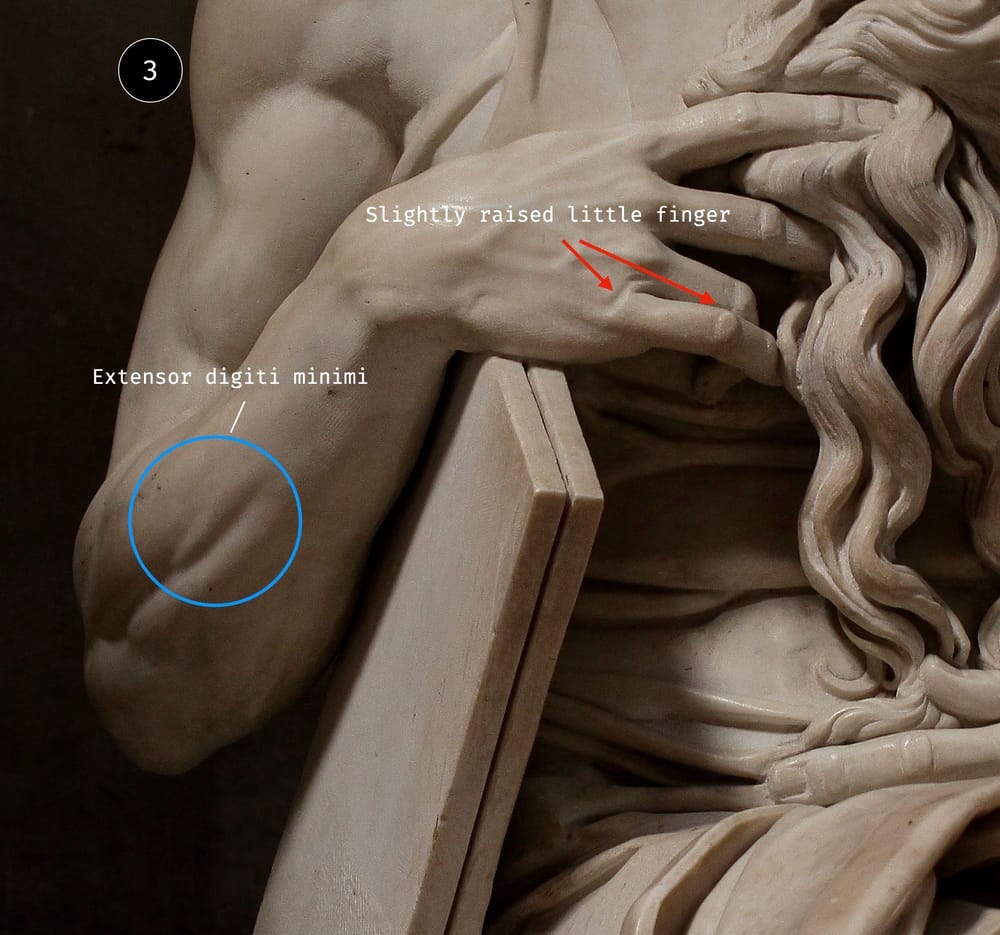
Take a look at the pinky on Michelangelo’s Moses.
Notice anything strange? One tiny detail has left people shocked.
How did Michelangelo carve something this lifelike? 🧵👇
Moses was part of an abandoned grand tomb for Pope Julius II, a project Michelangelo wrestled with for 40 years. The final composition was reduced from its original vision, but Moses alone remains a titan of marble, its lifelike presence so intense that a legend arose—after finishing it, Michelangelo supposedly struck the knee with his chisel and shouted, "Why don’t you speak?".
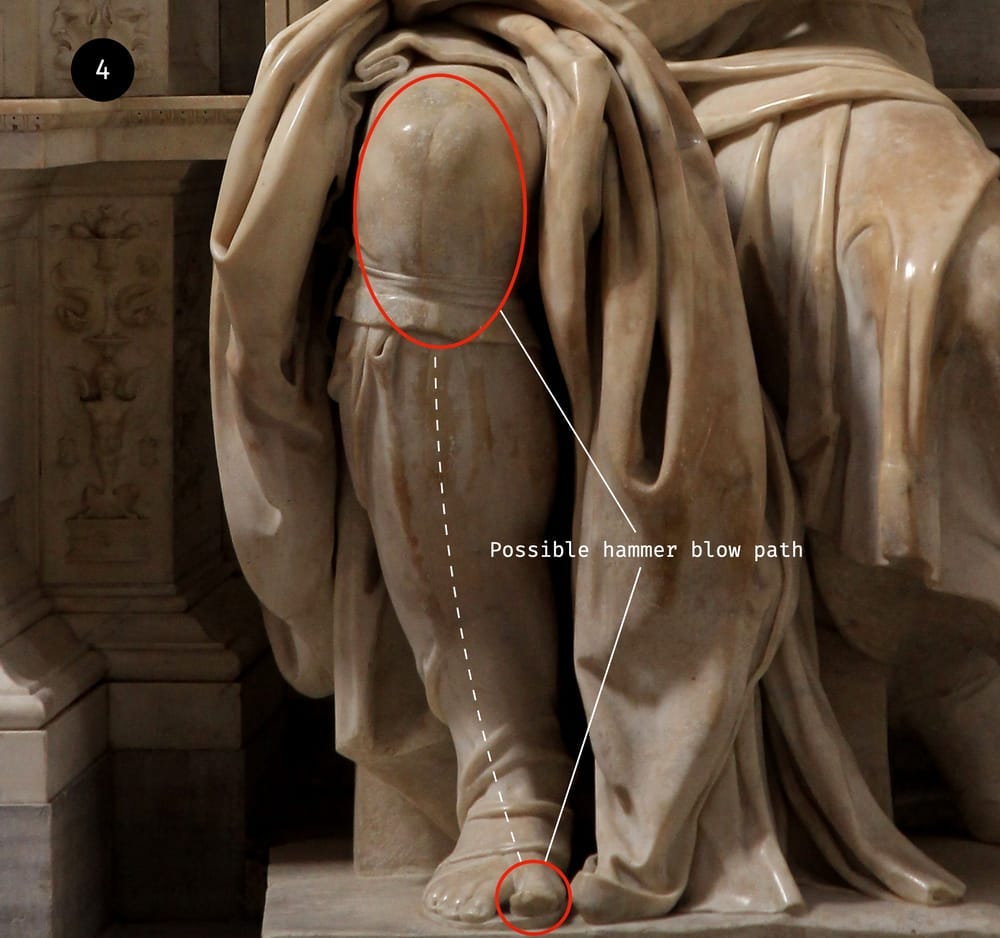
This obsession with realism isn’t unique to Moses. In David, Michelangelo sculpted a young warrior frozen in the moment before battle, his veins subtly raised, his gaze sharp with anticipation. The left hand, slightly larger than expected, seems to clench with tension. Every part of his body suggests potential energy—a coiled force about to explode into motion.
In The Pietà, Michelangelo achieves something different but just as masterful. The Virgin Mary cradles Christ’s lifeless body, and yet, there’s a tension in how his weight drapes over her lap. The folds of Mary’s robe flow naturally, carved with such finesse that they seem soft rather than stone. The contrast between youthful beauty and tragic death is devastatingly effective. These works prove Michelangelo's ability to make marble feel more human than flesh itself.
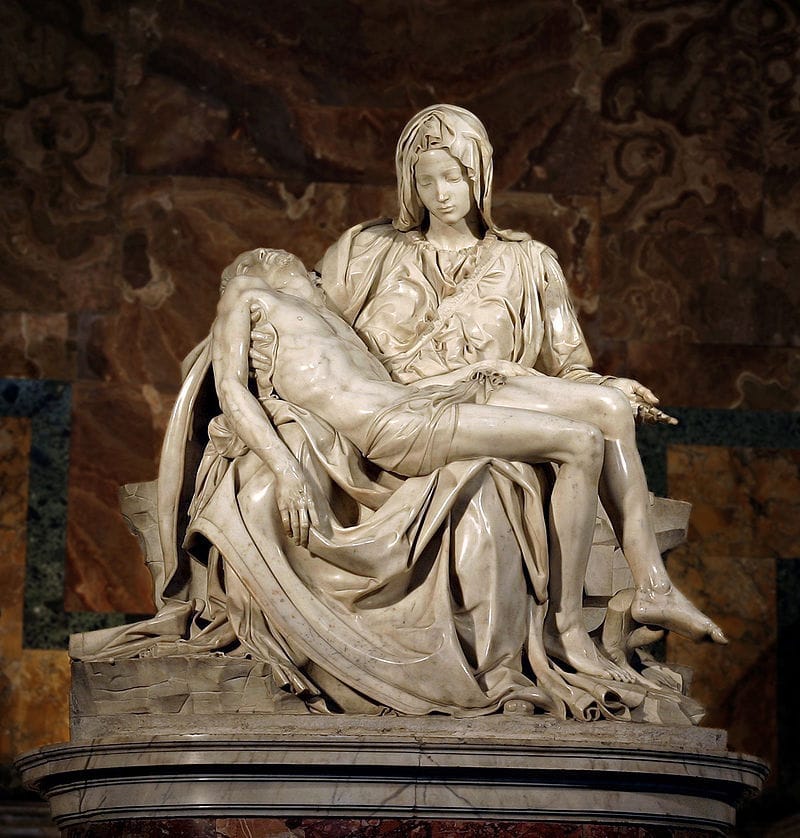
But the perfection of David and The Pietà did not last. In his later years, Michelangelo’s precision gave way to turmoil and nowhere is this clearer than in The Duomo Pietà (also called The Deposition).
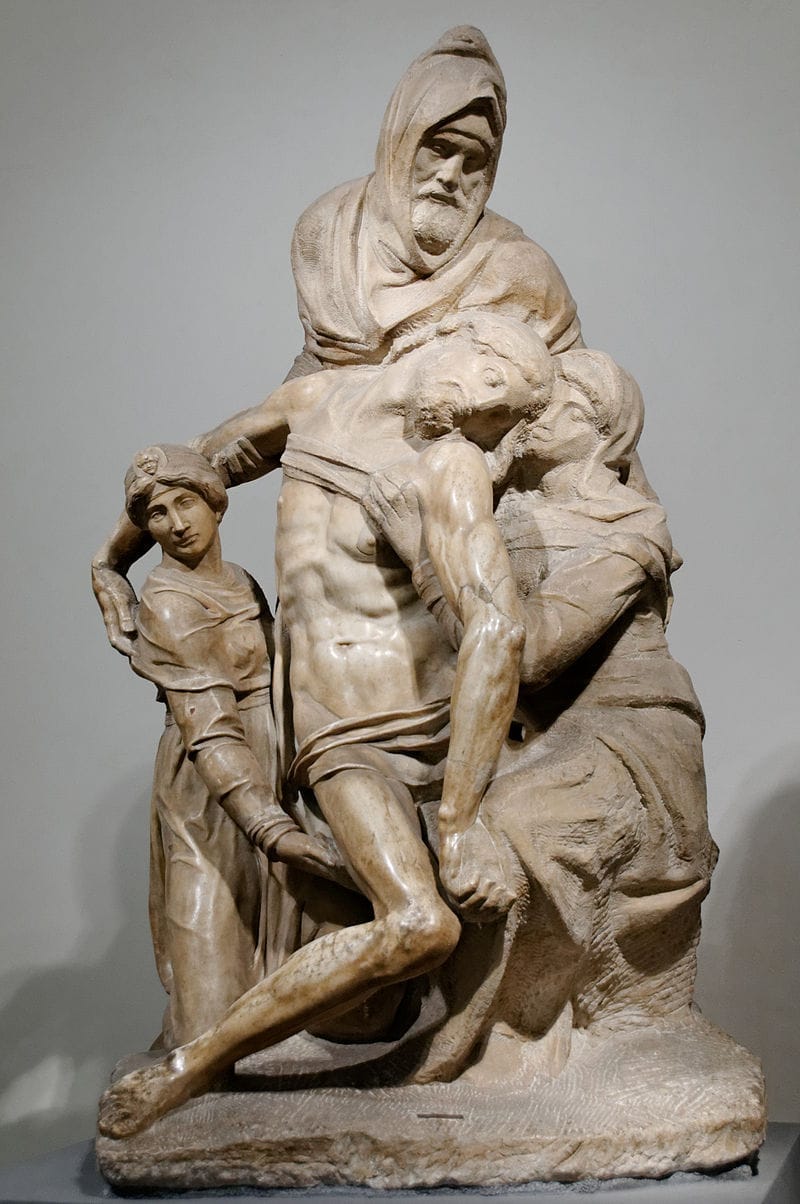
Look closely, and you’ll see something unsettling—the limbs are irregular, disproportionate, lacking the power and harmony of his earlier sculptures. Gone is the dramatic energy of David. Gone is the divine beauty of The Pietà. Instead, The Duomo Pietà feels awkward, fractured, troubled—as if Michelangelo's mind, once so sure and confident, could no longer control the marble the way it once did.
Michelangelo, nearing the sculpture’s completion, was so displeased with it that he took a hammer and smashed it himself, striking it in a furious act of destruction. Whatever flaws haunted him are now lost to us—what remains is a damaged sculpture, one patched together by another artist, Tiberio Calcagni. The true tragedy isn’t that Michelangelo destroyed it; the tragedy is that Calcagni’s restorations erased Michelangelo’s final struggle, polishing away the raw, unfiltered emotion of the master’s last years.
Michelangelo once said, "Every block of stone has a statue inside it, and it is the task of the sculptor to discover it." But what happens when a sculptor can no longer see clearly? When the years of carving, painting, and endless perfectionism take their toll?
His early works show a man who could shape marble into something divine. His later works reveal a man at war with his own creation, struggling against time, his own limitations, and perhaps, the crushing weight of his own legacy.
In Moses, David, and The Pietà, we see Michelangelo’s mind at its sharpest, chiseling perfection out of raw stone. In The Duomo Pietà, we see a different Michelangelo—one who no longer believes in his own genius, one who sees only imperfections, one who can no longer bring himself to finish what he started.
In the end, Michelangelo's story is not just about creation—it's about the inevitable destruction that follows.
“The greater danger for most of us lies not in setting our aim too high and falling short; but in setting our aim too low, and achieving our mark.”
Michelangelo



